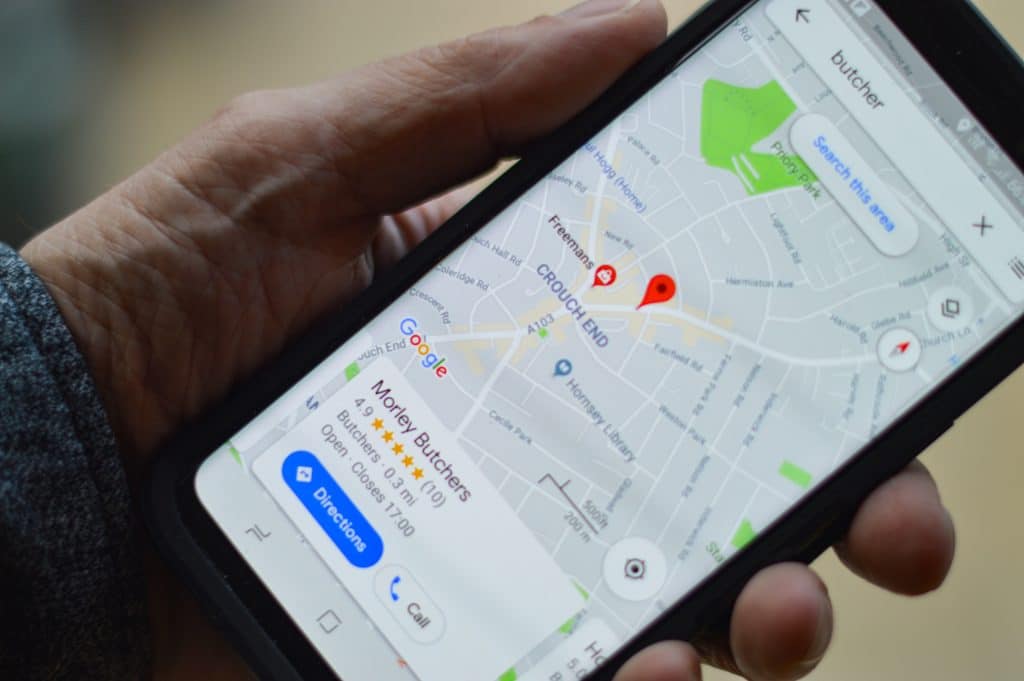Local search results let people find whatever products and services they want and then follow turn-by-turn directions straight to the front door of the business.
Hungry? Just look for restaurants near me. Feeling bored? Hey, check for escape rooms, arcades, and other entertainment venues in the area. Want anything else at all? Type in your search terms and away you go.
So, if you’re trying to increase foot traffic to your brick-and-mortar business, embracing the power of local search is a must. Otherwise, you’re bound to get left in the dust by competitors in the know.
Wondering just how to get started? Here’s all you need to know about the hottest question of the year: “Local SEO: Why does it matter?”
What is Local SEO?
Local SEO, or search engine optimization, allows business owners to improve the visibility of their brand when users perform local searches. These searches use keywords that show an intent to find a restaurant, shop, or other physical place of business in the area.
The results typically show up in the map pack up top to make navigating to the business quick and easy. Additional results show up below the map to let users navigate to relevant brands’ websites if they wish.
Why Does It Matter
If you’re not optimized for relevant local search terms, your business won’t show up at the top of the map results, potentially taking you out of the running altogether.
You will likely lose foot traffic to your competitors who enjoy better visibility from ranking higher on the page.
Local searches are big business, too. Over 46% of all searches have a local search intent.
And over 75% of people who perform a local search end up visiting at least one of the businesses within 24 hours.
So, if you miss out on the chance to capitalize on relevant local searches, you could lose a lot of sales opportunities through the years.
How Local SEO Works
Local SEO largely works like normal searches in that the search engine matches keywords with relevant content. The ranking factors used to populate the results differ greatly from normal searches, however.
Google’s algorithm looks at the location of the user, first and foremost, and compares it to nearby brands’ NAP citations. Then, the system matches the user’s search term to keywords that appear in each company’s Google My Business (GMB) profile and reviews.
Additional factors come into play in accurately ranking the results, such as:
- Overall tone of reviews
- Google Maps star rating
- Social media shares
- Total number of check-ins
Overall, brands must have a strong online presence and the following to back it up to maximize their appearance in local search results.
Benefits of Focusing on Local Queries
By making sure your brand can rank high for local queries, you’ll get to enjoy all the following benefits:
- Get a big boost to the overall awareness of your brand
- Increase foot traffic to your physical storefronts
- Boost organic visitors to your brand’s website
- Build strong connections with your target audience
- Improve credibility with prospective and existing customers
With so many benefits up for grabs, you really cannot afford to ignore opportunities for local search engine optimization. If you don’t do it, your competitors will. So, don’t let them leave you in the dust.
Best Practices in Showing Up in Local Results
If you want to show up in local results, simply follow these four steps to start improving your search rankings.
1. Find Keywords with a Local Intent
To rank high on local searches, you definitely need a keyword map to help guide the way.
Start creating that map by researching keywords relevant to your brand using smart tools, like Semrush, SpyFu, or WordStream. Then, narrow down the list by only selecting the ones with local intent.
Local keywords typically contain location-based phrases. Sometimes, they may include other terms that indicate they want to find somewhere in the area, like “pizza near me” or “best pet stores nearby.”
2. Optimize Your Google My Business Profile
Without a Google My Business profile, you have little to no chance of ranking high in local results. Fortunately, creating your GMB profile is actually quite easy. You just have to set up your account and then fill in all the prompts.
Once your profile is complete, you’ll want to optimize it with local keywords, up-to-date images, and micro-blog posts. Don’t forget to respond to all your reviews with gratitude or offers to resolve any complaints.
3. Check All Your NAP Citations
Accuracy is key when it comes to your NAP, or name, address, and phone number, citations. These citations should be consistent anywhere and everywhere your brand shows up on the web.
Otherwise, the search engine might get confused about the actual location of your business. Not only will that mess up your ability to rank well for local keywords but could also impact your storefront’s placement on the map.
4. Create Local-Optimized Content
Your website needs to make it crystal clear where your brick-and-mortar location lies. To do that effectively, you just need to infuse your site with local-optimized content.
You could start doing that by using your blog to share local events your customers might enjoy attending. Or even consider sponsoring events in your city, which comes with the added benefit of getting local backlinks that help boost your credibility even more.
Don’t forget to put your city and state on each page, plus any positive nicknames the locals use for it. If you’re located in Seattle, for example, you’ll want to use ‘Emerald City’ in your quality content from time to time.
After completing these four steps, more customers will likely come your way. At that point, you just have to provide an excellent customer experience to get great reviews, improve your rating, and earn social media shares.
All that will help improve your local SEO success even more, making it easier to rank high for all your relevant local search terms.
Need Help Boosting Your Success with Local SEO?
If you want to achieve great success with local SEO, you’re going to have to put in the time and effort. Optimization doesn’t come easily, after all, nor is it possible to speed run through to the finish line.
You can make it easier on yourself, however, by bringing in the professionals at WriterAccess to help you out.
By signing up for a two-week free trial, it’s possible to get the quality content and other marketing support services you need to succeed in reaching your goals.







